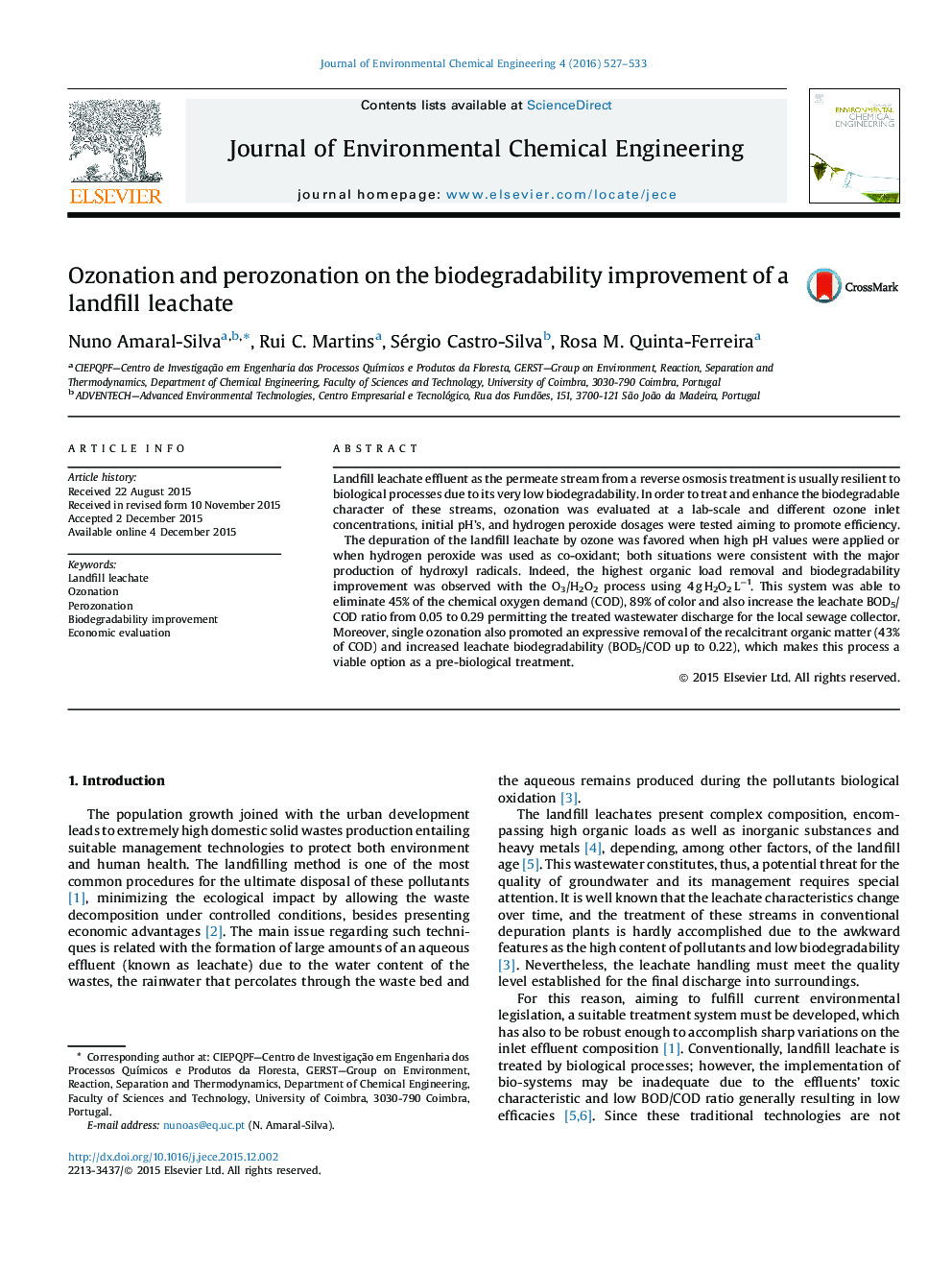| کد مقاله | کد نشریه | سال انتشار | مقاله انگلیسی | نسخه تمام متن |
|---|---|---|---|---|
| 221906 | 464267 | 2016 | 7 صفحه PDF | دانلود رایگان |
Landfill leachate effluent as the permeate stream from a reverse osmosis treatment is usually resilient to biological processes due to its very low biodegradability. In order to treat and enhance the biodegradable character of these streams, ozonation was evaluated at a lab-scale and different ozone inlet concentrations, initial pH’s, and hydrogen peroxide dosages were tested aiming to promote efficiency.The depuration of the landfill leachate by ozone was favored when high pH values were applied or when hydrogen peroxide was used as co-oxidant; both situations were consistent with the major production of hydroxyl radicals. Indeed, the highest organic load removal and biodegradability improvement was observed with the O3/H2O2 process using 4 g H2O2 L−1. This system was able to eliminate 45% of the chemical oxygen demand (COD), 89% of color and also increase the leachate BOD5/COD ratio from 0.05 to 0.29 permitting the treated wastewater discharge for the local sewage collector. Moreover, single ozonation also promoted an expressive removal of the recalcitrant organic matter (43% of COD) and increased leachate biodegradability (BOD5/COD up to 0.22), which makes this process a viable option as a pre-biological treatment.
Journal: Journal of Environmental Chemical Engineering - Volume 4, Issue 1, March 2016, Pages 527–533
